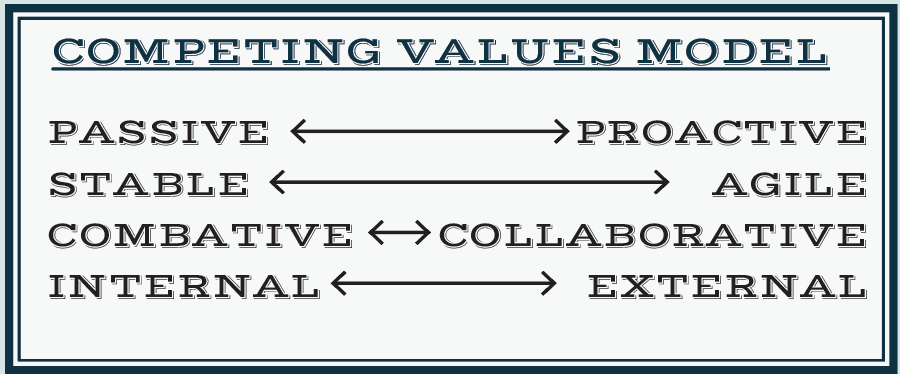In my many years as a consultant and now as an investor in conscious businesses, it has become increasingly clear to me that the ability to create a high-performance culture is one of the most powerful competitive assets any company can wield.
Imbuing your company with a conscious culture is one of the four foundational principles of Conscious Capitalism. I’d even go so far as to argue that an employee culture infused with a higher societal purpose is the critical element that allows an organization to connect with and maintain relationships across all other stakeholder dimensions. Culture is that one thing that allows your organization to pivot, move quickly, be healthy, stay resilient, and respond to market moves ahead of competitors. Building an environment that is supportive of your team, generates high levels of engagement, and inspires employees to deliver on that holy grail of “discretionary effort” is one of the most important — and most difficult — tasks any entrepreneur faces.
THE MYTH OF PERKS, PAY, AND BENEFITS
As this notion of culture as a competitive advantage has gained more mainstream credibility, we hear myriad stories of the entrepreneurs who have excelled at building legendary workplace cultures. Places like Zappos, Patagonia, and The Container Store spring to mind, and we all envision the day when we can have catered lunches, on-demand massages, and parenting rooms in our gleaming new offices. But when you’re truly in startup mode, how do you build a great culture and great work environment if both money and time are scarce?
This is a question we must answer every time we make an investment and begin down the path of building a new company at the Conscious Venture Lab, the Baltimore-based business accelerator I helped found. Embedded in this common question is the myth that culture is all about how much money you spend on employees. Give people enough “things” and they’ll love coming to work and always go the extra mile, the myth says. If a place has cool furniture, games in the corner, and a keg in the kitchen, we’re led to believe that, by definition, it will be a fun and great place to work.
While it’s true that great cultures have fun as a core part of the work experience, culture is not about the money we spend on activities and benefits. Expensive perks are nice, but the notion that you can buy your way to a great culture, offering rewards (and presumably punishment) so that employees behave as you would like, is not only a remnant of the industrial age but antithetical to how we should think of our co-workers in the context of building a conscious company. As University of Virginia Darden School of Business professor Ed Freeman, the father of stakeholder management, has said on many occasions, the only thing that belongs between a carrot and stick is a mule. We humans, on the other hand, are much more complex in what drives us. As such, building a great work environment isn’t about how much you pay or how many toys you can fit in your office. Plus, to paraphrase the HubSpot Culture Code (which every startup founder should commit to memory): a bankrupt company probably isn’t such a great place to work.
DEFINING COMPANY CULTURE
So, what does it mean to have a great company culture? Let’s start by defining culture itself. For this exercise, I often turn to two of our most respected consultants and mentors at the Conscious Venture Lab: Susan Salgado, founder and managing partner of Hospitality Quotient, and Gerry McDonough, CEO of LeadFirst Learning Systems LLC. Both have advised businesses large and small on the intricacies of building high-performance cultures.
For a simple definition, I love how McDonough has crystallized what he’s seen in advising companies for 30 years. He says culture boils down to “What behaviors does it take to get along and thrive around here?”
Salgado also defines culture on behavioral terms, as a set of shared beliefs, values, practices, traditions, celebrations, stories, legends, heroes, norms, and — perhaps most importantly — language that we use to describe how we operate and how we achieve success.
The key to both of these definitions is that culture is not about implementing the latest employee-benefit fad. The essence of culture is all about how we treat each other and those we encounter in the context of achieving our desired organizational purpose and executing our competitive strategy. What are the behaviors we will accept and which behaviors do we find unacceptable? Given this definition of culture, the real question for startups becomes much more specific: how will you create a behavioral operating system (bOS) that will source, attract, support, develop, and inspire people who behave in ways that will enable you to execute your short- and long-term strategic plan and win in the marketplace?
IT’S NEVER TOO EARLY FOR COMPANY CULTURE
Beyond the “culture as employee benefits” mindset, there’s another myth that inhibits the progress of culture initiatives in the startup world: many founders mistakenly believe that culture only matters and only happens once you start to grow the organization. After all, how can you have a culture with just two people?
We often hear various riffs on the same theme: “We’ve known each other for years and have a great working relationship,” “Our culture will develop intuitively based on how we are together — people will see that and act in the same way,” “We don’t need to worry about culture now, there are just a few of us and we need to focus on sales.”
The fact is, the minute more than one person is involved in the organization, a culture starts to develop. And that culture — the way you interact with people, deliberately or not — will be the thing that propels you towards success or hinders your ability to execute. Culture is the key ingredient that creates sales, builds lasting relationships with suppliers, and gets communities engaged in the success of your company. The question is, will you guide it or let it simply happen and take its own shape? In other words, will you have culture by default or by design?
SOME WORKPLACE CULTURES ARE BETTER THAN OTHERS
A final piece worth considering is that all workplace cultures aren’t created equal. While this idea might seem obvious, creating a good culture is more nuanced than you might think. McDonough has had the opportunity at LeadFirst to screen thousands of employee cultures, and has developed an elegant model consisting of eight characteristics of culture that live in tension with one another in almost every organization. This “competing values” model (see below) helps companies understand what culture is and where they exist on the continuum of four cultural polarities (eight defining characteristics), and helps them shape healthy, engaging, and high-performing cultures.
These poles represent behavioral norms that either the organization has decided are important or that have simply taken hold over time. All of these behaviors, if they are to flourish, require reinforcement by myriad policies, processes, protocols, and leadership.

On the left side of the diagram we see organizations that McDonough describes as “static.” They are more passive in terms of dealing with stakeholders and they value stability. Combat and a focus on survival of the fittest are priorities, and these organizations tend to have more of an internal focus, meaning they concentrate on the internal structure and processes of the organization as primary organizing principles. At the other pole, we have what McDonough describes as “dynamic” cultures. Companies closer to this pole value more proactive behaviors, favor agility over stability, tend to be more collaborative in their approaches, and have more of an external focus, seeking to understand the nature of their stakeholder relationships (primarily customers) as the driving force of decision-making. Conscious companies tend to adopt behaviors that correspond to the dynamic side of the poles, intentionally setting the PACE (Proactive, Agile, Collaborative, and Externally focused) for culture formation. This mindset helps them bring their missions to life in ways that honor each stakeholder as human beings of worth and dignity.
In Practice
5 STEPS TO CREATING A GREAT WORKPLACE CULTURE IN PRACTICE
Now that we’ve explained what culture is and is not and the characteristics it can embody, here are five things you can start to implement today towards building a great place to work.
1. BE DELIBERATE
Do the work to understand and articulate the behaviors that you as a management team think are important to your success. Far better yet, practice these behaviors both in “business as normal” situations and — more importantly — in high-pressure situations. It’s impossible to build a culture in alignment with your strategy if you don’t take the time to think about what that culture looks like. If you leave it to chance, the likelihood that you’ll get something other than what propels you forward is very high. Every company will have a culture, and it will be based on the behaviors leaders consistently demonstrate and tolerate. As Peter Drucker has said, “There are only three things that happen naturally in organizations: friction, confusion, and underperformance. Everything else requires leadership.” Lead your organization by working through a process to define the behaviors that will be required if you are to be a successful conscious company.
2. BUILD A BASELINE WITH DATA
In culture, like in every other aspect of your business, WGMGD — what gets measured gets done. Even if you are just two founders, it’s imperative that you are deliberate about the behaviors you want to see as you grow and have a clear understanding of your own behavioral tendencies and those of your co-founders and early employees. This isn’t just about what you like to do or how you perceive yourself. It’s important that you get some professional help to understand where you stand vis-à-vis your desired future if you are going to put processes in place to close the gap. Look at tools like Diialog from LeadFirst and the Kolbe A Index analysis to help get you started.
3. LEARN HOW TO HIRE
Once you’ve defined your culture in behavioral terms, you need to find people who are likely to share those norms and thrive in that type of environment. The traditional way of hiring people is backwards: we hire on performance or the strength of a resume, and then we fire on behavior. Tools like RoundPegg and Diialog offer low-cost technology that can help you build a hiring process supportive of your desired culture.
4. TALK ABOUT IT
Culture isn’t something you can set and forget. It continues to evolve as new employees join your team. Even when you get the hiring right, new people bring idiosyncrasies and ways of interacting that you can’t anticipate. To maintain and evolve your culture in a conscious manner, transparency and trust-building are essential. At Hungry Harvest, one of the most successful companies to come out of the Conscious Venture Lab, they have what they call an “Honesty Meeting” every Monday where employees can discuss essentially anything that’s on their minds. This type of engagement allows people to ask questions and probe actions that may seem misaligned with the culture they’ve formed.
5. LEAD WITH YOUR ACTIONS
At the Conscious Venture Lab, we’re often asked about the biggest mistake we see startup founders make in building a new company. Without question, sending mixed cultural signals is a tremendous failure we see far too often. It’s easy to live your values when things are going well, but in the heat of challenge will you abandon collaboration and take matters into your own hands? This may win the battle of the day, but too many compromises of that sort will lose the war of building a great culture.
Ultimately, creating a great place to work isn’t about perks; it’s about action. It starts with understanding and articulating the behaviors that will be required to bring your purpose to life and help you best execute your competitive strategy. Using the tools and strategies I describe above, you can develop a plan for creating a high-performance culture and continually closing the gap between where you are now and where you hope to be. Remember: your goal is to develop processes and language such that the organization will always be clear about “what it takes to be successful around here.” This will keep you on track as you experience the natural tensions that come from expanding and scaling your base of stakeholders. Only by shaping company culture deliberately, from the start, can your company truly achieve its mission.
In Summary
8 things to remember when building your startup’s company culture
1. Culture is about behavior.
2. Culture is happening now, in startup mode. If you ignore it, it will be defined for you.
3. You don’t need to buy Thanksgiving turkeys, kegs, and foosball tables to establish culture. Bankrupt companies aren’t great places to work.
4. Establish a baseline and set a desired future state based on your business strategy and your purpose.
5. Be prepared to see your culture evolve as your stakeholder map grows.
6. Always create culture oriented from the employee or associate’s point of view.
7. Not all cultures are created equal: the best are focused on executing the company’s mission and strategy using Proactive, Agile, Collaborative, and External (PACE) values.
8. Employee culture is critical in terms of building and maintaining relationships across every other stakeholder dimension.





